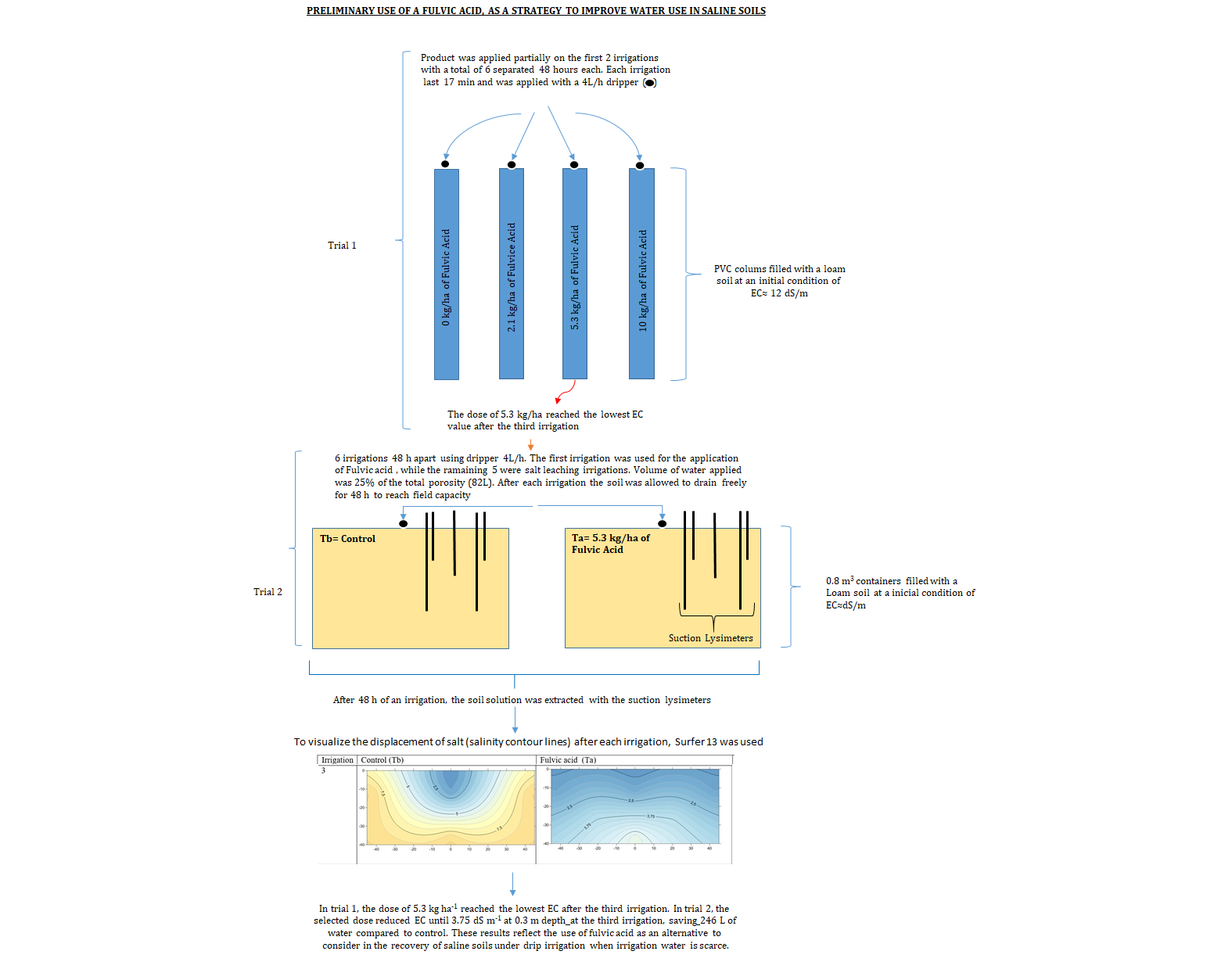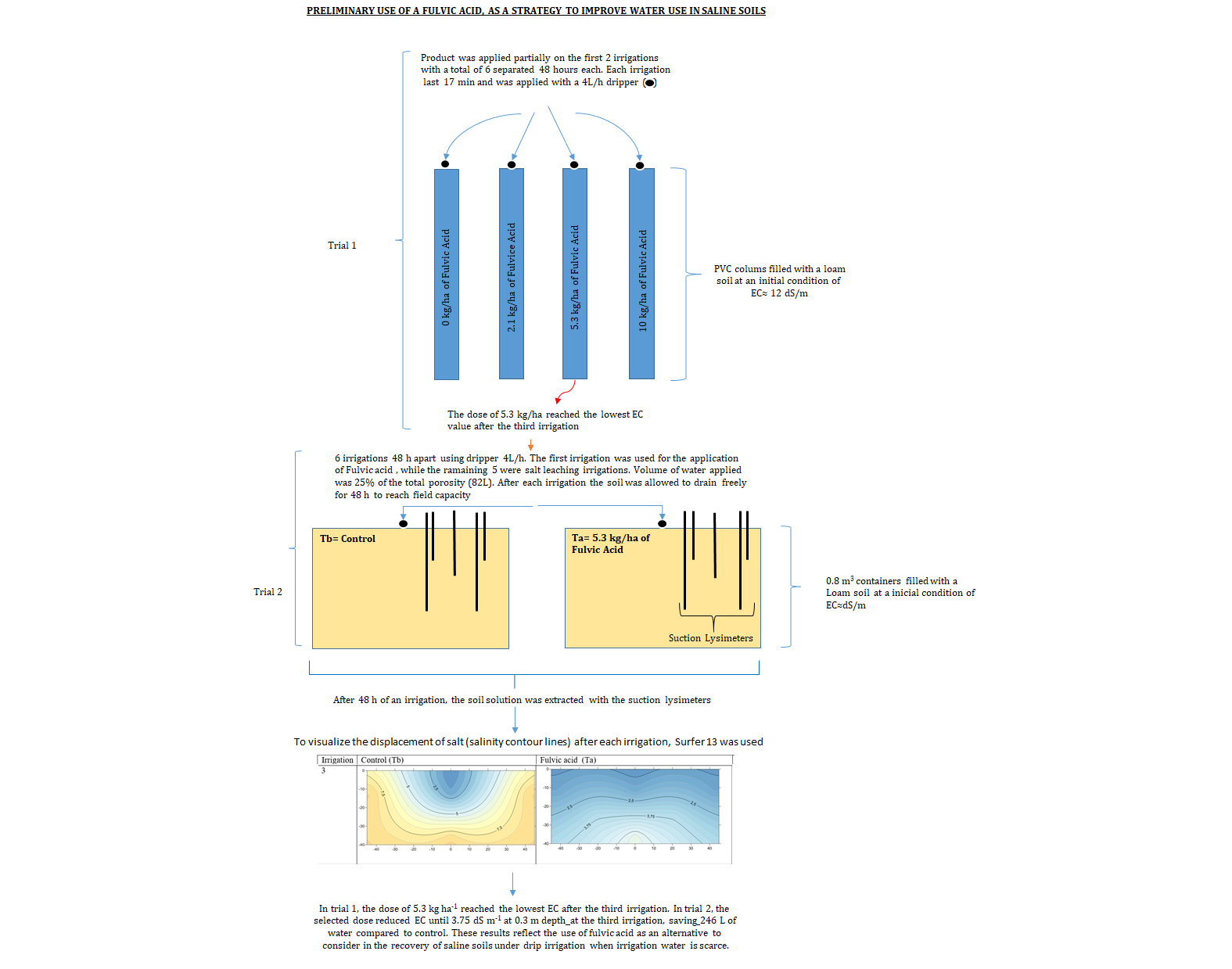Preliminary use of a fulvic acid, as a strategy to improve water use in saline soils
Preliminary use of a fulvic acid, as a strategy to improve water use in saline soils
DOI:
https://doi.org/10.48162/rev.39.016Palabras clave:
acondicionador de suelos, ácido húmico, conductividad eléctrica del suelo, fracción de lixiviaciónResumen

An evaluation of a fulvic acid (FA) was made in a Loam soil, by selecting the best dose to achieve salt displacement under a drip emitter. In trial 1, PVC columns were filled with a loam soil and irrigated with a KCl solution of electrical conductivity (EC) of 12.5 dS m-1. Once the soil solution EC reached the value of the KCl solution, FA doses of 0, 2.1, 5.3 and 10.5 kg ha-1 were applied. The bulk electric conductivity and soil chemical properties were evaluated after 6 irrigation cycles. In trial 2, the same soil salinized with the KCl solution was placed in 0.8 m3 containers. Two irrigations treatments were performed: a control and the best FA dose from trial 1. The displacement of the salt bulb created from irrigation with a dropper in the soil profile was characterized. In trial 1, the dose of 5.3 kg ha-1 reached the lowest EC after the third irrigation. In trial 2, the selected dose reduced EC until 3.75 dS m-1 at 0.3 m depth at the third irrigation, saving 246 L of water compared to control. Additionally, the salinity bulbs were more horizontally extended in the FA treatment.
Highlights:
- Application of FA (5.3 kg ha -1) reduced the water use by 50% compared to leaching carried out exclusively with water.
- The use of Fulvic acid showed to be an alternative to consider in the recovery of saline soils under drip irrigation when irrigation water is scarce.
- Little or not residual effect was found after the use of Fulvic acid.
Descargas

Descargas
Publicado
Cómo citar
Número
Sección
Licencia

Esta obra está bajo una licencia internacional Creative Commons Reconocimiento-NoComercial-CompartirIgual 3.0.
Aquellos autores/as que tengan publicaciones con esta revista, aceptan las Políticas Editoriales.










.jpg)




